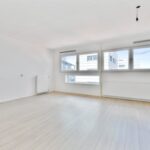The home decor market is a booming industry that encompasses a wide range of products and trends designed to enhance and personalize living spaces. From furniture to accessories, the home decor market caters to the desire for individuals to create a comfortable, stylish, and functional environment in their homes. In this article, we will delve into the intricacies of the home decor market, exploring current trends, key players, technological impacts, sustainability options, regional preferences, consumer tips, and future projections.
As the demand for home decor continues to grow worldwide, it is important to understand the factors driving this market’s expansion and evolution. From innovative design concepts to eco-friendly alternatives and technological advancements, the home decor market offers a diverse array of options for consumers looking to spruce up their living spaces.
Whether you are a homeowner considering a renovation or an entrepreneur looking to tap into this lucrative industry, understanding the nuances of the home decor market is essential.
In this comprehensive guide, we will examine the current landscape of the home decor market and provide insights into how various factors such as technology, sustainability, and regional differences impact consumer preferences and purchasing behavior. Additionally, we will discuss how individuals can navigate this dynamic market as consumers and explore future projections for this ever-evolving industry. So let’s dive in and explore everything you need to know about the exciting world of home decor.
Current Trends in Home Decor
The home decor market is constantly evolving, with new trends emerging each year. Keeping up with the latest styles in home decor can help individuals update their living spaces and create a more modern and inviting atmosphere. From popular color schemes to must-have furniture pieces, staying informed about current trends in home decor is essential for anyone looking to revamp their living space.
Popular Color Schemes
One of the most noticeable trends in home decor is the use of specific color schemes. In recent years, neutral tones such as whites, greys, and beiges have been particularly popular, giving homes a clean and minimalistic look. Additionally, there has been a rise in the use of bold and vibrant colors as accents in home decor, adding a pop of personality to any room.
Sustainable Materials
Another major trend in home decor is the use of sustainable and eco-friendly materials. With an increasing focus on environmental consciousness, many consumers are seeking out furniture and decor items made from recycled or renewable materials. This shift towards sustainability has led to an increase in demand for products such as bamboo furniture, organic textiles, and upcycled decorative pieces.
Indoor Greenery
Bringing nature indoors has become a popular trend in home decor. Houseplants have surged in popularity, not only for their aesthetic appeal but also for their air-purifying qualities. The incorporation of indoor greenery into home decor adds a touch of freshness and tranquility to any living space.
Overall, staying updated on the current trends in home decor is crucial for those who wish to keep their living spaces stylish and modern. Whether it’s embracing sustainable materials or incorporating indoor greenery, these trends offer a wide range of options for individuals looking to refresh their homes. As the market continues to evolve, it will be interesting to see how these trends develop in the future.
Key Players in the Home Decor Market
The home decor market is a thriving industry that encompasses a wide range of products and services designed to enhance the aesthetic appeal of residential spaces. From furniture and textiles to lighting and wall art, there is a vast array of options available to consumers looking to decorate their homes. In this section, we will explore some of the key players in the home decor market who are shaping the industry and driving innovation.
Some of the prominent companies that have established themselves as leaders in the home decor market include:
- IKEA: Known for its affordable and stylish furniture designs, IKEA has become a go-to destination for consumers looking to decorate their homes on a budget.
- HomeGoods: This popular chain of home furnishing stores offers a diverse selection of high-quality merchandise at competitive prices, catering to various tastes and preferences.
- Williams-Sonoma: Specializing in upscale kitchenware and home furnishings, Williams-Sonoma has built a reputation for offering premium products with a focus on quality craftsmanship and elegant design.
These key players have not only shaped consumer preferences but also influenced industry trends and standards, making them integral to understanding the dynamics of the home decor market. By continually innovating their product offerings and adapting to evolving consumer needs, these companies play a significant role in driving growth and competition within the industry.
In addition to retail giants, e-commerce platforms like Amazon and Wayfair have revolutionized the way consumers shop for home decor, providing convenient access to an extensive range of products from various brands. With their user-friendly interfaces and efficient delivery services, these online retailers have become major players in the digital landscape of the home decor market.
The Impact of Technology on Home Decor
One of the most prominent trends in home decor technology is the rise of smart home devices. These include voice-activated assistants, smart lighting systems, and temperature control devices that can be controlled remotely through mobile apps. With the increasing popularity of these devices, consumers are now able to customize and control various aspects of their home decor with just a few taps on their smartphones.
Another technological advancement that has influenced the home decor market is virtual reality (VR) and augmented reality (AR) design tools. These tools allow consumers to visualize how different furniture pieces, paint colors, and decorations will look in their homes before making any purchases. This not only enhances the shopping experience but also helps prevent costly mistakes in decorating.
In addition to smart home devices and VR/AR design tools, the use of 3D printing technology has also made a significant impact on the home decor market. Consumers now have access to unique and customizable decor items that can be printed at home or purchased from specialized 3D printing companies. This has opened up a whole new world of possibilities for personalized and one-of-a-kind home decor options.
- Smart home devices
- Virtual reality design tools
- Augmented reality design tools
- 3D printing technology
Sustainability and Eco-Friendly Home Decor Options
As society becomes more conscious of the environmental impact of their choices, the home decor market has seen a significant rise in demand for sustainable and eco-friendly options. This shift in consumer preferences has led to an increase in products that are designed and manufactured with the environment in mind. From furniture made of reclaimed wood to organic textiles and natural dyes, there are now plenty of choices for those looking to incorporate sustainable elements into their homes.
Benefits of Sustainable Home Decor
Choosing sustainable home decor options not only benefits the planet, but also offers numerous advantages for homeowners. Many sustainable materials are durable and long-lasting, reducing the need for frequent replacements. Additionally, these products often promote healthier indoor air quality, as they are free from harmful chemicals commonly found in traditional furnishings and decorations.
Embracing Eco-Friendly Practices
In addition to purchasing eco-friendly products, consumers can also make environmentally conscious decisions when it comes to decorating their homes. For example, upcycling or repurposing old items can not only reduce waste but also add a unique touch to a living space. Incorporating energy-efficient lighting and smart home technology is another way to create an eco-friendly home environment without sacrificing style or comfort.
As the demand for sustainability continues to grow, it is expected that even more innovative and environmentally friendly options will become available in the home decor market. By making informed choices and supporting companies that prioritize sustainability, consumers have the power to drive positive change within this industry.
Regional Variances in Home Decor Preferences
The home decor market is a highly varied and diverse industry that is influenced by regional preferences and cultural differences. Each region around the world has its own unique style, traditions, and design aesthetics that shape the way people decorate their homes. Understanding these regional variances in home decor preferences is crucial for businesses looking to tap into different markets and cater to the specific needs of consumers.
In Europe, for example, there is a strong emphasis on traditional designs, antique furniture, and classic elegance. Scandinavian countries are known for their minimalist and functional approach to home decor, with an emphasis on natural materials and neutral color palettes. In contrast, countries in the Middle East often favor opulent and luxurious home decor styles with intricate patterns, bold colors, and lavish furnishings.
In Asia, there is a rich tapestry of design influences ranging from the vibrant colors and ornate details of Indian decor to the simplicity and harmonious balance of Japanese design. In Latin America, bright colors, handcrafted textiles, and eclectic mix-and-match styles are often prominent features in home decor. These regional differences highlight the need for businesses to tailor their products and marketing strategies to align with the specific tastes of consumers in each area.
According to a report published by Grand View Research, Inc. the global home decor market size was valued at USD 616.6 billion in 2019 and is expected to grow at a compound annual growth rate (CAGR) of 3.1% from 2020 to 2027. The Asia Pacific region dominated the market with a revenue share of 32.1% in 2019 due to rapid urbanization, increasing disposable income levels, and changing consumer lifestyles.
This data underscores the importance for businesses to analyze regional variations in home decor preferences in order to capture a larger share of this lucrative market.
| Region | Home Decor Preference |
|---|---|
| Europe | Traditional designs, antique furniture, classic elegance |
| Scandinavia | Minimalist approach, natural materials |
| Middle East | Opulent styles with intricate patterns and bold colors |
| Asia | Vibrant colors (India) or simplicity (Japan) |
How to Tap Into the Home Decor Market as a Consumer
The home decor market is a thriving industry that offers a wide range of products and trends for consumers to explore. As a consumer, it can be exciting and overwhelming at the same time to navigate this market and find the best options for your home. Whether you are looking to revamp your living space or simply add a few new touches, there are several ways to tap into the home decor market as a consumer.
First, it’s important to do your research and stay updated on current trends in home decor. This can include exploring popular styles, color schemes, and furniture designs that are making waves in the industry. By staying informed about the latest trends, you can make informed decisions about how to update your home with fresh and modern looks.
Another way to tap into the home decor market is to consider the impact of technology on home decor. With the rise of e-commerce and online shopping, consumers now have access to a wide range of products from all over the world. Online platforms also offer virtual room design tools that allow consumers to visualize how different pieces of furniture or decor will look in their homes.
Furthermore, sustainability and eco-friendly options are becoming increasingly important in the home decor market. Many consumers are now seeking out products that are ethically sourced, environmentally friendly, and made with sustainable materials. This shift in consumer preferences has led many companies to prioritize sustainable practices in their production process.
| Home Decor Market Data | Statistics |
|---|---|
| Total Home Decor Market Size | $664 billion (in 2019) |
| Growth Rate | 5% (projected CAGR from 2020-2027) |
| Key Players | IKEA, Williams-Sonoma Inc. Bed Bath & Beyond Inc. etc. |
The Future of the Home Decor Market
In conclusion, the home decor market is a dynamic and ever-evolving industry that continues to experience growth and innovation. As the demand for home decor products and services increases, it is essential for businesses to stay abreast of the latest trends and technological advancements in order to remain competitive. With the rise of online shopping and digital platforms, the home decor market has become more accessible to consumers, allowing for greater diversity and options in decorating their living spaces.
Furthermore, sustainability and eco-friendly options are becoming increasingly popular within the home decor market as consumers prioritize environmentally conscious choices. This shift towards sustainable products indicates a growing awareness of the impact of consumerism on the environment. Companies that can adapt to these changing preferences will have a competitive advantage in attracting eco-conscious consumers.
As we look ahead, the future of the home decor market is promising, with projections indicating continued growth and opportunities for both businesses and consumers. The integration of technology, emphasis on sustainability, and regional variances in preferences will continue to shape the landscape of the home decor market.
Whether you’re a business looking to tap into this market or a consumer wanting to update your living space, staying informed about current trends and future developments will be critical in navigating this dynamic industry.
Frequently Asked Questions
How Big Is the Market for Home Decor?
The market for home decor is substantial, with a wide range of products and styles available to meet the diverse needs of consumers. From furniture to wall art to small decorative items, the home decor market caters to a variety of tastes and preferences.
How Big Is the Home Goods Industry?
The home goods industry is large and encompasses a wide range of products such as furniture, textiles, kitchenware, and decorative items. This industry is essential for furnishing and decorating homes, providing consumers with options that suit their individual aesthetics and functional needs.
What Is Home Decor Explanation?
Home decor refers to the art of enhancing the interior of a house or apartment to create a more aesthetically pleasing and comfortable environment. This can include furniture, color schemes, lighting, and decorative items that reflect personal style and contribute to a welcoming atmosphere within the home.

I’m thrilled to be your companion on this exciting journey through the world of home decor and design. With a passion for turning houses into homes and a keen eye for the finer details, I’m here to help you transform your living spaces into beautiful, functional, and meaningful havens.





